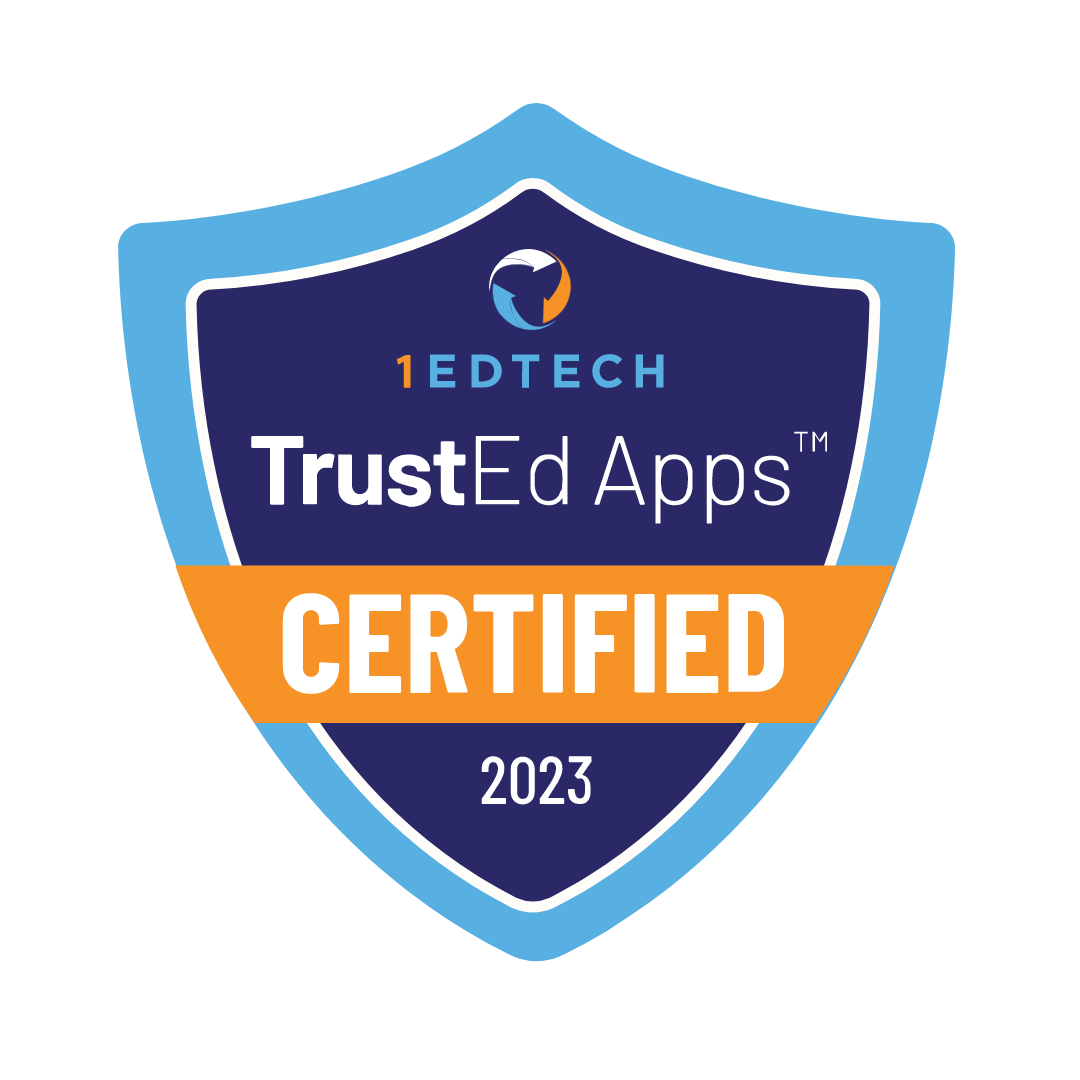Contents
- 1 Identificar el estilo de aprendizaje de un niño con TDAH
- 2 Elegir materiales didácticos adecuados a la edad
- 3 Personalizar un plan de estudios adaptado al TDAH
- 4 Herramientas y técnicas para una enseñanza eficaz
- 5 Cómo gestionar el horario y la estructura de la educación en casa
- 6 Acceso a apoyo y recursos para educar en casa con TDAH
La elección del programa de educación en casa para un niño con TDAH consiste en comprender cómo aprende mejor. Tanto si se inclinan por lo visual, los sonidos, las actividades prácticas o la lectura y la escritura, un buen plan de estudios debe adaptarse a su estilo de aprendizaje para mejorar sus habilidades y mantenerlos comprometidos. Pero no se trata sólo de conocer su estilo de aprendizaje; los materiales que elijas también deben tener en cuenta la edad de tu hijo. Por ejemplo, los juegos interactivos llenos de color pueden cautivar a un alumno, mientras que el software interactivo puede estimular su curiosidad. Con estos conocimientos, ya puedes empezar a crear un plan de estudios en casa que se adapte a las necesidades de tu hijo y le ayude a prosperar a pesar de sus dificultades.
Identificar el estilo de aprendizaje de un niño con TDAH

Los niños diagnosticados de TDAH presentan con frecuencia enfoques de aprendizaje que contrastan con los de los niños en desarrollo. Es fundamental identificar el estilo de aprendizaje de estos niños para que los educadores puedan personalizar un plan de estudios que promueva la participación y la comprensión óptimas del niño. En cuanto a las preferencias de aprendizaje, suele haber cuatro clasificaciones: auditivo, cinestésico y de lectura/escritura.
Los alumnos visuales dependen en gran medida de las ayudas visuales y los gráficos para captar la información, mientras que los alumnos auditivos prefieren escuchar como método principal de comprensión del material nuevo. Los alumnos cinestésicos prosperan con actividades prácticas que les permiten moverse e interactuar con su entorno. Por último, los estudiantes de lectura/escritura absorben la información de forma más eficaz a través de palabras escritas o habladas; se benefician de la lectura, la escritura y la participación en debates relacionados con el material.
Identificar el estilo primario de aprendizaje de un niño con TDAH puede ser crucial para mejorar su experiencia educativa. Permite a padres y educadores diseñar un plan de estudios que se ajuste a la forma preferida del niño de procesar la información. De este modo, el proceso de aprendizaje se vuelve más eficiente, lo que mejora el rendimiento académico y el compromiso general
Por ejemplo, si a un niño se le ha diagnosticado un aprendizaje cinestésico, la incorporación de actividades basadas en el movimiento a sus clases diarias puede mejorar significativamente su comprensión y retención de conceptos clave. Esto podría implicar el uso de manipulativos durante las sesiones de matemáticas o la realización de experimentos científicos que permitan al niño involucrarse físicamente con la materia.
Identificar el principal estilo de aprendizaje del niño permite adaptar el plan de estudios a sus necesidades específicas y mejorar la eficacia del aprendizaje.
Para ayudar eficazmente a un niño con TDAH en su proceso de aprendizaje es fundamental comprender su forma de aprender. Esto permite a los educadores adaptar los métodos pedagógicos a los puntos fuertes del niño y a sus necesidades, lo que conduce a un entorno de aprendizaje gratificante y fructífero.
Al comprender cómo aprende mejor un niño con TDAH, los educadores pueden desarrollar materiales didácticos a medida que satisfagan las necesidades del niño. Profundicemos en el proceso de selección de recursos para niños con TDAH en función de su edad y características individuales.
Elegir materiales didácticos adecuados a la edad

Elegir los materiales para un niño diagnosticado de TDAH es vital para su crecimiento y sus logros. Es importante adaptar las estrategias y herramientas pedagógicas en función de la edad, teniendo en cuenta las necesidades de cada niño.
Cuando se trata de niños, utilizar recursos visualmente atractivos puede ser muy beneficioso para captar su interés. Utilizar libros y juegos interactivos que se ajusten a sus preferencias de aprendizaje puede fomentar la participación y mejorar la comprensión.
Por otra parte, los niños mayores pueden necesitar materiales más complejos y detallados que les supongan un reto intelectual y les mantengan interesados. Utilizar herramientas de aprendizaje basadas en la tecnología, como aplicaciones educativas o software adaptativo, puede ayudar a adaptar la experiencia educativa a los requisitos académicos individuales del niño.
Es fundamental recordar que los niños con TDAH se benefician de las experiencias de aprendizaje interactivas y envolventes. Este tipo de compromiso mantiene mejor su atención y les ayuda a retener la información de forma eficaz. Si incorporas juegos atractivos y herramientas de aprendizaje basadas en la tecnología, estarás proporcionando un entorno propicio para su estilo de aprendizaje y, en última instancia, fomentando una experiencia de aprendizaje positiva.
Digamos que un niño mayor con TDAH tiene dificultades con los métodos tradicionales de aprendizaje con libros de texto. En este caso, un programa informático educativo que se adapte al ritmo del niño y le plantee retos al nivel adecuado puede marcar una diferencia significativa en su compromiso y comprensión.
Adaptar el material didáctico a la edad y las necesidades del niño garantiza que reciba el contenido adecuado. También fomenta un entorno en el que pueden prosperar a pesar de sus dificultades.
Comprender la importancia de adaptar los materiales de aprendizaje es sólo el primer paso. Ahora nos adentraremos en el proceso de personalizar un plan de estudios adaptado al TDAH para que se ajuste a los puntos fuertes y débiles de cada niño.
Personalizar un plan de estudios adaptado al TDAH

Cuando se trata de enseñar a un niño con TDAH, no existe un enfoque único. Cada niño tiene sus puntos fuertes, sus puntos débiles y su forma de aprender. Esto se vuelve más crucial cuando se educa en casa, ya que le permite personalizar el plan de estudios para satisfacer las necesidades y preferencias de su hijo. Diseñar un plan adecuado para un niño con TDAH implica crear una mezcla de flexibilidad y estructura que satisfaga las necesidades individuales del niño. Esto podría implicar dividir las lecciones en partes, incluir descansos e incorporar actividades que estimulen los sentidos para ayudar a mantener la atención del niño.
Para empezar, es fundamental reconocer que los métodos de enseñanza tradicionales pueden no ser los más adecuados para los niños con TDAH. En cambio, utilizar recursos especializados adaptados a los alumnos con TDAH puede suponer una gran diferencia. Las herramientas de aprendizaje multisensorial y las técnicas de enseñanza adaptativa pueden crear un plan de estudios personalizado y adaptable que puede atraer y beneficiar a los niños con TDAH.
Por ejemplo, las estadísticas muestran que el 60% de los niños con TDAH se benefician de las técnicas de aprendizaje multisensorial, mientras que el 75% muestran mejoras con los planes de aprendizaje personalizados. Al incorporar estos métodos al plan de estudios de su hijo, le estará proporcionando un entorno de aprendizaje óptimo que se ajuste a sus necesidades.
Tomemos como ejemplo las matemáticas. Para un niño con TDAH que tiene dificultades con la enseñanza tradicional de las matemáticas, incorporar manipulativos como bloques para contar o barras de fracciones puede hacer que los conceptos abstractos sean más concretos y fáciles de comprender. Este enfoque práctico puede ayudar a mantener al niño comprometido y concentrado durante las lecciones.
Además, es esencial comprender la importancia de adaptarse a la naturaleza del TDAH. Esto podría significar permitir pausas para moverse o proporcionar acceso a juguetes inquietos durante el tiempo de estudio. Las investigaciones indican que el 80% de los niños con TDAH se benefician de las pausas frecuentes durante las sesiones de aprendizaje y el 85% de la incorporación de la actividad física a su rutina.
Divida las lecciones en segmentos más pequeños para abordar los distintos estilos de aprendizaje. Utilizar experiencias sensoriales y técnicas de enseñanza adaptativas basadas en la investigación. Así se crea un plan educativo adaptado a las necesidades únicas del niño.
Los enfoques pioneros en la personalización de planes educativos para niños con necesidades de aprendizaje únicas sientan una base influyente para las estrategias de enseñanza eficaces. Ahora, exploremos la miríada de herramientas y técnicas diseñadas para elevar la experiencia de educar en casa.
Herramientas y técnicas para una enseñanza eficaz

Enseñar a un niño con TDAH no tiene por qué ser abrumador. Con las estrategias y los recursos adecuados, puede convertirse en una experiencia agradable tanto para el profesor como para el alumno.
Un método útil es utilizar un horario, que es un gráfico que muestra las tareas y actividades diarias o semanales del niño. Esta ayuda visual ayuda al niño a entender qué tiene que hacer y cuándo, facilitándole la organización y la gestión eficaz de su tiempo. También crea una sensación de rutina y estabilidad que puede reconfortar a los niños con TDAH, para quienes las transiciones y las sorpresas pueden ser un reto.
Los cronómetros son otra herramienta inestimable. Pueden dividir las tareas en trozos de tiempo manejables, ayudando al niño a mantenerse concentrado y evitar sentirse abrumado. Además, los cronómetros pueden introducir un elemento de urgencia y motivación, especialmente para tareas que el niño puede considerar menos interesantes o difíciles.
Las ayudas organizativas, como carpetas o cubos con códigos de colores, ayudan a mantener los materiales de estudio del niño ordenados y fácilmente accesibles. Estas ayudas no sólo facilitan la organización, sino que también sirven como pistas visuales que ayudan a recordar.
Utilizar métodos de aprendizaje interactivos y prácticos es crucial para captar la atención de los niños con TDAH. Incorporar actividades que impliquen movimiento, experiencias sensoriales o creatividad puede promover la participación activa y mejorar su comprensión de los conceptos.
Las estrategias de refuerzo positivo desempeñan un papel esencial en el mantenimiento de un entorno de aprendizaje positivo. Mediante recompensas, elogios y el reconocimiento de los logros, los educadores pueden motivar y reforzar el buen comportamiento, así como el progreso académico. Esto puede aumentar significativamente la confianza y el entusiasmo del niño por aprender.
Utilizando estas herramientas y técnicas en la enseñanza, los educadores pueden crear un entorno de apoyo e inclusivo. Es ahí donde los niños con TDAH pueden prosperar en la escuela y personalmente.
Ahora, equipados con herramientas eficaces de enseñanza para niños con TDAH, pasemos a explorar estrategias para organizar los horarios y las estructuras de la educación en casa.
Cómo gestionar el horario y la estructura de la educación en casa

Establecer un horario proporciona a los niños una sensación de seguridad y claridad sobre sus responsabilidades diarias. Para los niños con TDAH, que se benefician enormemente de la rutina, tener un horario puede mejorar significativamente su experiencia diaria. Es como embarcarse en un viaje por carretera a su destino de vacaciones con navegación GPS, tener esa rutina predecible sirve como una hoja de ruta útil para ellos, a lo largo del día ayudándoles a mantener la concentración y permanecer organizados.
Al establecer un horario de educación en casa para un niño con TDAH, considere dividir el día en segmentos estructurados dedicados a diferentes actividades. Esto podría incluir franjas horarias específicas para asignaturas académicas como matemáticas o ciencias, así como tiempo para actividades físicas como correr o jugar en el patio. Incorporar descansos regulares garantiza que su hijo tenga la oportunidad de recargar las pilas y volver a concentrarse, lo cual es crucial cuando se trata de TDAH.
Además, la utilización de ayudas visuales y horarios codificados por colores puede ser de gran ayuda para reforzar la rutina y ayudar al niño a realizar las actividades diarias con eficacia. Los apoyos visuales, como los bloques codificados por colores para las distintas actividades, permiten comprender claramente el plan del día. De hecho, la investigación ha demostrado que los apoyos visuales pueden ser especialmente útiles para los niños con TDAH, ya que proporcionan previsibilidad y claridad.
Al integrar estas estrategias en el horario y la estructura de la educación en casa, estará proporcionando a su hijo una base sólida para prosperar en su entorno de aprendizaje. Del mismo modo que un viaje por carretera bien planificado le prepara para un viaje agradable, una rutina de educación en casa cuidadosamente diseñada sienta las bases para un aprendizaje exitoso cada día.
Ya hemos explicado la importancia de estructurar bien el horario de la educación en casa. Ahora, vamos a explorar varias opciones de planes de estudios. Están diseñados para satisfacer las necesidades específicas de los niños con TDAH.
Acceso a apoyo y recursos para educar en casa con TDAH

Cuando se educa en casa a un niño con TDAH, tener acceso a apoyo y recursos puede marcar la diferencia. A veces puede parecer una tarea ardua. Recuerda que no estás solo. Muchos padres en todo el mundo se enfrentan a desafíos. Busca orientación.
Una opción útil es explorar plataformas que ofrecen abundante información, desde consejos para organizar las clases hasta sugerencias sobre técnicas de enseñanza. Estos sitios web proporcionan a los padres orientación experta. Seleccionan recursos diseñados específicamente para la educación en casa de los niños, y el TDAH les ayuda a personalizar su enfoque para satisfacer las necesidades individuales de sus hijos.
Algunos foros ofrecen un verdadero sentido de comunidad, donde se puede conectar con otros padres que están navegando desafíos similares. Saber que hay otras personas que entienden por lo que estás pasando puede ser increíblemente tranquilizador e informativo.
Uno de estos recursos es nuestro sitio web, que ofrece una gran cantidad de recursos seleccionados y diseñados específicamente para satisfacer las necesidades de los padres que educan en casa a niños con TDAH. Ofrece consejos y guías de expertos. También da acceso a una comunidad de apoyo. Esto facilita a los padres la tarea de educar en casa a un niño con TDAH.
También puedes encontrar grupos de apoyo locales en tu zona, que pueden proporcionarte ayuda práctica y conexiones con otras familias que se enfrentan a los mismos retos.
Con estos recursos, dispondrás de la orientación y la información que necesitas. También tendrás una comunidad de apoyo en la que apoyarte. Ellos te ayudarán a navegar el viaje único de educar en casa a un niño con TDAH.
Acceder al apoyo y a los recursos adecuados es fundamental cuando se educa en casa a un niño con TDAH. Es reconfortante saber que hay numerosas vías disponibles para ayudar tanto a los padres como a los niños en este importante viaje educativo.
El éxito futuro de su hijo es nuestro principal objetivo en Legacy Online School. Visite nuestro sitio web para explorar las numerosas oportunidades de la escuela en línea Legacy.
Echa un vistazo a los programas de la escuela en línea Legacy:
Escuela primaria de Legacy Online School pone el listón muy alto. Se trata de una educación de calidad. Nos esforzamos por despertar la curiosidad. También nos esforzamos por fomentar la creatividad. Ofrecemos un sólido plan de estudios. Para ello contamos con la ayuda de educadores cualificados.
Legacy Online Middle School ofrece educación digital. Está diseñada para estudiantes de enseñanza media. La escuela se enorgullece de ofrecer clases online en directo impartidas por profesores titulados. Las clases son en línea e interactivas.
Legacy Online High School es un método único de aprendizaje en línea cuidadosamente diseñado para estudiantes de secundaria. Combina el aprendizaje síncrono, una amplia gama de métodos pedagógicos y un énfasis en la accesibilidad.
La escuela en línea Legacy ofrece lo mejor curriculum
Nuestro riguroso plan de estudios garantiza que los graduados estén bien preparados para las universidades y los centros de trabajo de todo el mundo. Además, nuestros vibrantes clubes virtuales conectan a estudiantes de todo el mundo.





